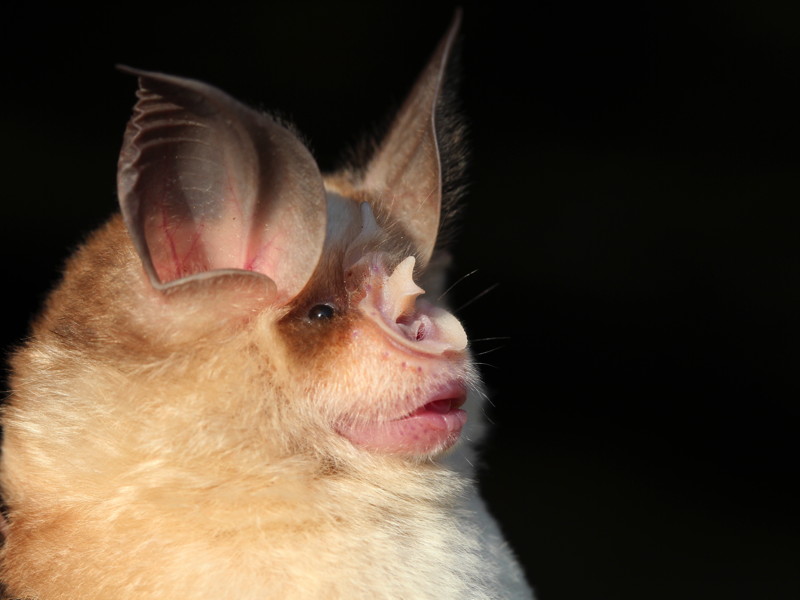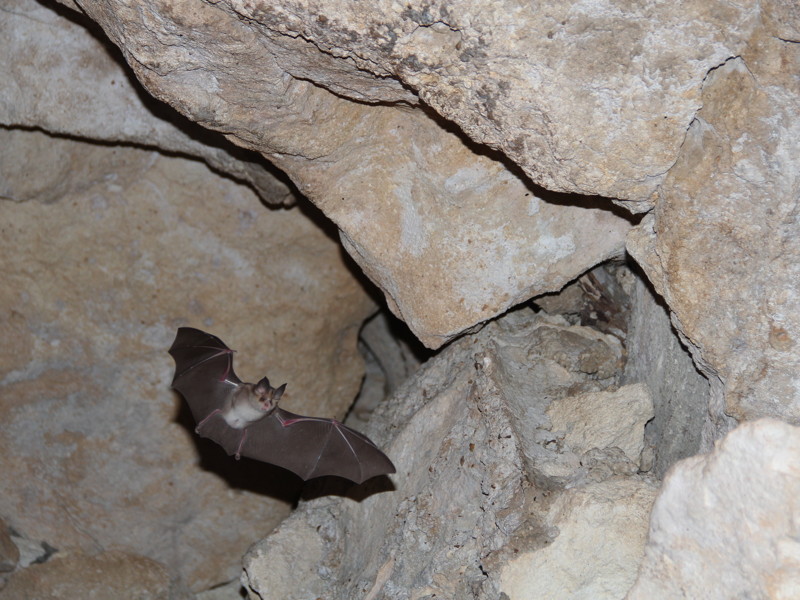Researcher Emma Teeling, an associate professor at University College Dublin's School of Biology & Environmental Science
Female bats check out the echolocation calls of potential mates, finds a new study involving Irish researcher Emma Teeling.
When it comes to love, looks aren’t everything. For bats, who live in the dark, echolocation calls seem to be an important serenade for males to woo the ladies.
That’s according to a new study out this week in PLOS ONE, which shows that female bats opt for males with higher echolocation peak frequencies, and males with these higher pitches are in better condition and sire more babies.
“Our paper shows that bats are ‘listening’ for a good mate rather than ‘looking’ for one,” says senior author Emma Teeling, an associate professor at University College Dublin (UCD)’s School of Biology and Environmental Science.
Bat love songs
Bats use echolocation to find their way around and to forage for food at night: they emit a ‘call’ and detect how the sound waves bounce off objects around them. But the new study suggests that the echolocation call could also act as a signal to help females identify a suitable mating partner in the dark.
The idea to look at echolocation and mating came from first author Dr Sébastien Puechmaille (now at the Ernst-Moritz-Arndt University, Greifswald, Germany, who did his PhD with Teeling at UCD on bumblebee bats in Thailand and Myanmar.
“We found in that study that as echolocation calls changed between populations of bats, the populations were less likely to mate with each other,” says Teeling. “The genetics was suggesting that echolocation is a driver of mate choice, but we needed to get behavioural data to show it.”
To put echolocation ‘love songs’ to the test, the researchers teamed up with sensory ecologist Björn Siemers (who unfortunately died during the study) in Germany and worked for years on populations of horseshoe bats (Rhinolophus mehelyi) in Tunisia and Bulgaria.

A horseshoe bat, photographed near Tabachka bat research station in north-east Bulgaria. Photo copyright S.J. Puechmaille
Songs of choice
One of the key findings was that male echolocation calls could signal whether the caller was in good shape, notes Teeling.
“High frequency calls indicate really good body condition, where the male is strong and healthy,” she says. “The smaller bats did not have such a high frequency.”
But were the females picking up on the cues? To find out, the researchers placed bats in a soundproof box and played back recordings of male echolocation calls. The result? The higher frequency calls acted as a siren for the females, who more readily chose to perch near the speaker emitting those sounds (though one suspects they may have been disappointed not to find a fit male suitor as the source).
Another plank of evidence came from genetic studies, which the researchers used to find out if males with higher echolocation calls tended to sire more babies.
“We used next-generation sequencing to screen for relatedness,” explains Teeling. “And we found that males with higher frequency are much more related to others, telling us that they leave more babies.”
Serenading at a price
Taken together, the findings point to echolocation as a driver for mating choice, according to Teeling. She describes the study, which was funded under an IRCSET-Marie Curie International Mobility Fellowship in Science, Engineering and Technology to Puechmaille, as a ‘paradigm shift’ in our understanding of echolocation, animal communication and mate choice.
“There is a lot of information in that sound,” she says. “There is a lot going on in the dark that we don’t yet understand.”
“Having a higher echolocation call might mean more mates and babies, but its high frequency also makes it more difficult to find food,” she says. “Essentially it is an attractive handicap, a little like a peacock’s tail.”

A horseshoe bat takes fight near Tabachka bat research station in north-east Bulgaria. Photo copyright S.J. Puechmaille
The secrets of healthy ageing
Teeling is also looking at how bats age. With funding from the prestigious European Research Council she is exploring why bats live longer and more healthily into old age than their body size suggests they should.
She is just back from a field trip collecting samples from bat roosts in Brittany, France, in conjunction with conservation group Bretagne Vivante.
“We drove a portable lab over in a van from UCD and we set up at these big old churches in Brittany where we took samples from bats,” she says. “We are looking at how genes are turned on and off at different ages, and we are looking at the condition of their DNA and mitochondria. Somehow bats evolved the ability to deal with the stresses of ageing, and nature has those answers.”
Women Invent Tomorrow is Silicon Republic’s campaign to champion the role of women in science, technology, engineering and maths. It has been running since March 2013, and is kindly supported by Accenture Ireland, Intel, the Irish Research Council, ESB, Twitter, CoderDojo and Science Foundation Ireland.